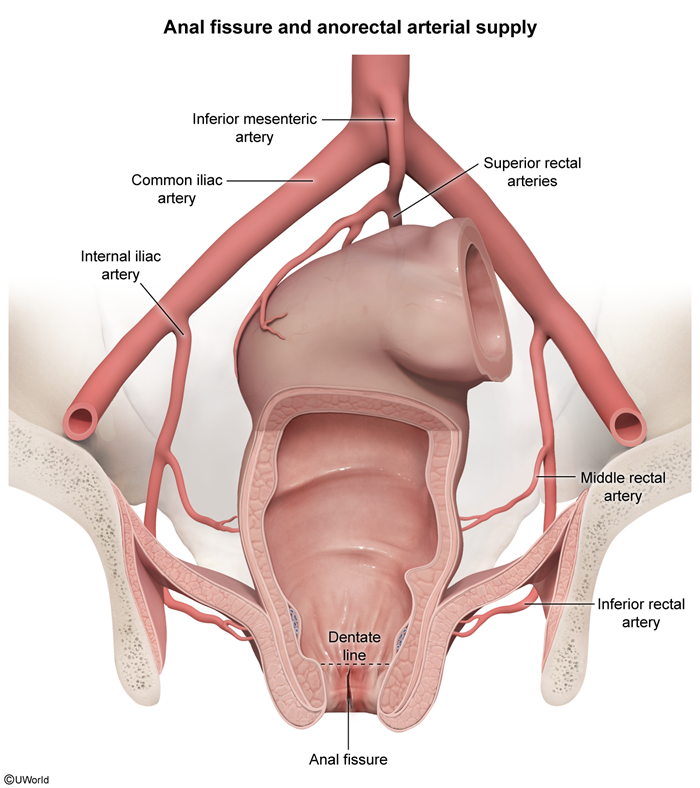Anal Fissure
Article Sections
Introduction
An anal fissure is a superficial, longitudinal tear in the anal mucosa distal to the dentate line (Figure 1). It typically occurs in the posterior midline of the anal verge and is most often caused by mechanical trauma, typically from chronic constipation (eg, straining) or the passage of hard stools. Patients often present with severe, tearing pain during defecation and bright red rectal bleeding.
Pathogenesis
Anal fissures commonly result from mechanical trauma to the anal mucosa, most often due to hard stools and constipation. Straining generates elevated anal sphincter pressure, which can stretch and tear the mucosa, producing a linear fissure. The majority of fissures occur at the posterior midline of the anal verge, where blood flow is relatively reduced, making the tissue more vulnerable to injury. Fissures located laterally or anteriorly are atypical and suggest a secondary etiology for anal fissure, such as inflammatory bowel disease, infection, or malignancy.
Continue Learning with UWorld
Get the full Anal Fissure article plus rich visuals, real-world cases, and in-depth insights from medical experts, all available through the UWorld Medical Library.
Figures
